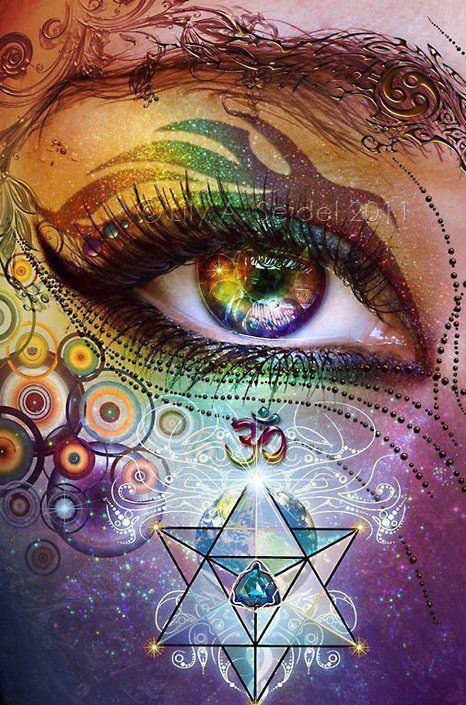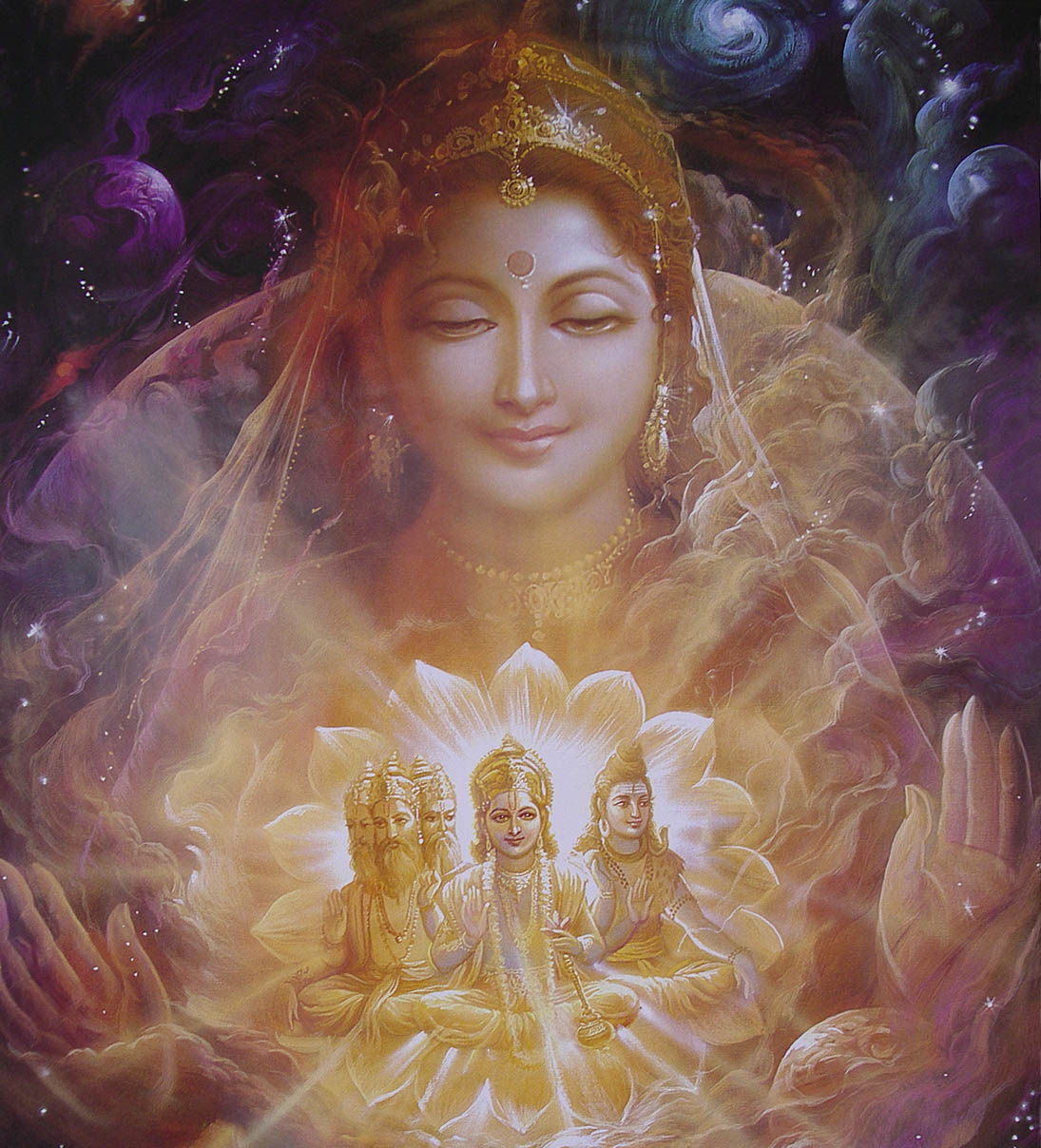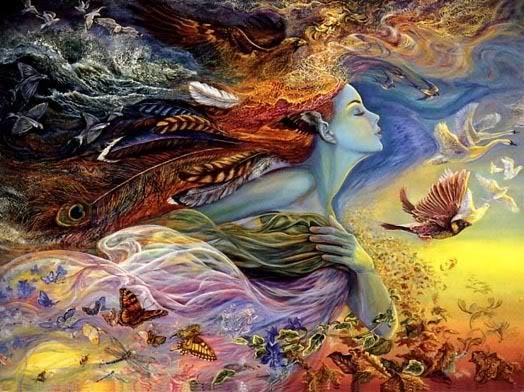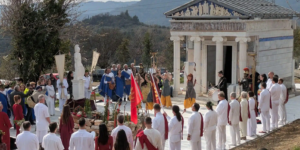Aditi (Mother of the Universe, the Primal Being) is all the Heaven, Aditi is the space, Aditi is Mother, Father and Children. Aditi is all the Gods and Goddesses, Aditi is the five bases of creation. Aditi is all that has been and all that will take birth. Rig Veda 1.89.10
Before creation, the universe is said to be concealed not only in the divine thought of Vishnu, but more primarily it is said to be held in the mystic womb of the Universal Goddess- Aditi. As the mother of the universe- the personification of infinite consciousness and unbounded space, Aditi is perceived as the unity of all things as well as the cause of all unity; as the endless expanse of consciousness and the primal truth of all things.
The Great Mother from whom everything in the universe emanates, she contains all the devas and other metaphysical beings, who are in fact perceived as her children. Known as Rhea to the Greeks- the mother of the Olympians, and Sephirah (tree of life) to the Kabbalists, the conception of the Cosmic Mother was envisioned by all mystery creeds and schools of antiquity. In the Tao Te Ching, as the latent power and order intrinsic in the universe she became the inner inexhaustible source of all life:
‘The spirit that never dies is called the mysterious feminine. Although she becomes the whole universe, her immaculate purity is never lost. Although she assumes countless forms, her true identity remains intact.
The gateway to the mysterious female is called the root of creation. Listen to her voice, hear it echo through creation. Without fail, she reveals her presence. Without fail, she brings us to our own perfection. Although it is invisible, it endures; it will never end.’
 Aditi in the parallel Vedic vision is the source of all gods and goddesses, and all the forms of nature as well as all the forces of existence are understood as her evolutes as they personify and represent the myriad expressions and finite faces of the ‘infinity’ that she is. This understanding has been the foundation of all matriarchal pagan religions wherein all forms of life, including the Gods and Demons are seen as contained within her womb. She is therein been called the Universal Mother.
Aditi in the parallel Vedic vision is the source of all gods and goddesses, and all the forms of nature as well as all the forces of existence are understood as her evolutes as they personify and represent the myriad expressions and finite faces of the ‘infinity’ that she is. This understanding has been the foundation of all matriarchal pagan religions wherein all forms of life, including the Gods and Demons are seen as contained within her womb. She is therein been called the Universal Mother.
The Rig Veda (10.72.3-5) explains the cyclic re-birth of the same essence through Aditi who is not only the source of creation but also the resultant creation:
‘We shall very clearly state the story of the birth of the gods… Before the birth of the gods, being came into existence from non-being…. From the creation-tree (uttanapada), came forth the earth (bhu), and the upper worlds (bhuvah) came forth from desire. Aditi gave birth to Daksa, and Aditi was born of Daksa again, O Daksa! Aditi is your daughter! All the Gods took birth later.’
The Katha Upanishad (2.1.7) also confirms:
‘Aditi, who arises with life, is the soul of the gods (devatamayi). Having entered the secret chamber of the heart, she who was born with the beings remains there. She is verily that.’
Aditi is then apprehended not only as the cosmic expanse that pervades the universe outside but also as the inner substratum of human consciousness from which emerge the different levels of reality and experience.
The ancient Vedic cosmogony thereupon describes her as the Supreme Mother who gives birth to the Gods, who then go on to become the guardians of the universe and its Cosmic Order, as Aditi holds eternally within herself all that which she casts into the movements of the cosmos and the forms of the Gods.
And it was this ancient vision contained in the Veda, of the Goddess Aditi as the primal reality, that went on to shape the subsequent visions of the Puranic cosmologies in which the Goddess or Sakti became the womb as well as the prime mover of the many worlds of the universe.

































1 Comment